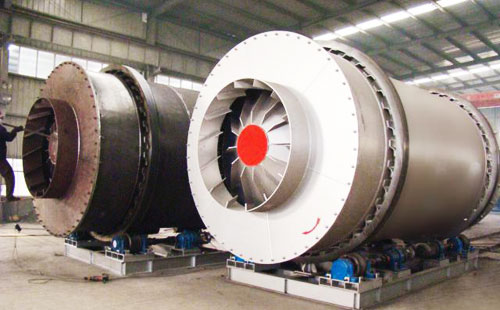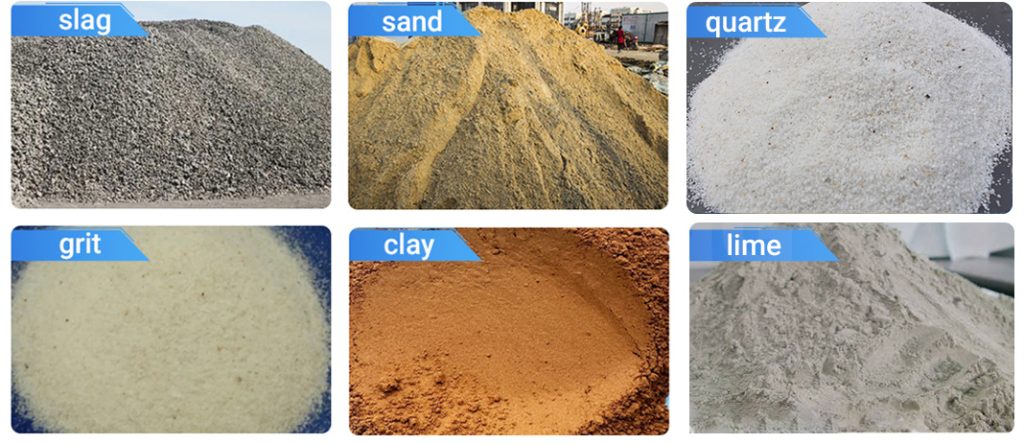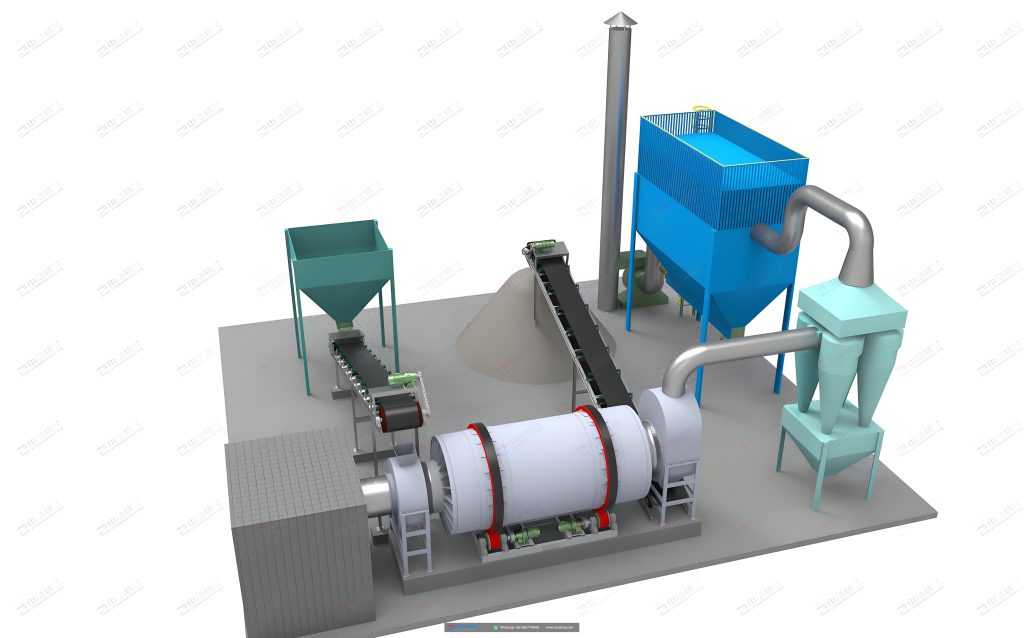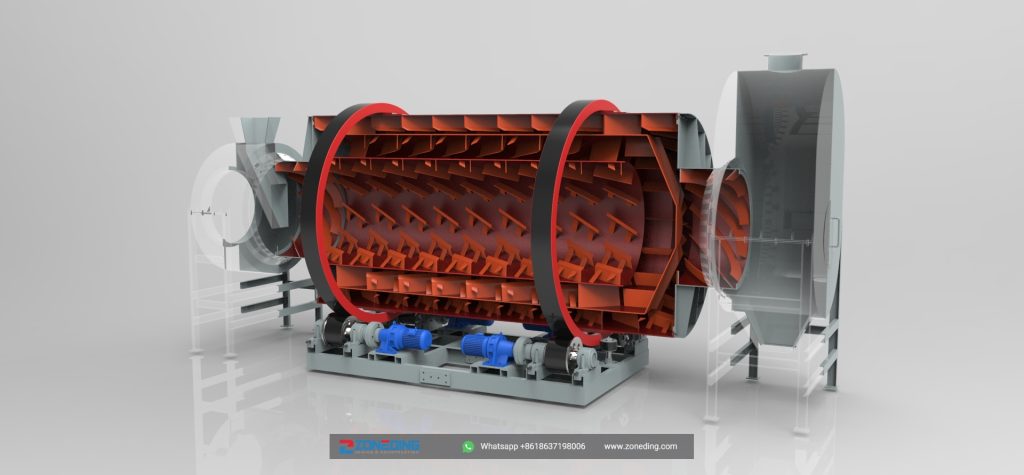Search the whole station Crushing Equipment
Sand dryer, also known as the three layers of drum dryer or three return cylinder dryer, is developed and manufactured based on the single-cylinder dryer. It’s an industrial dryer for non-viscous, liquid material.
Sand dryers can be classified based on two main factors: volume and the materials to be dried.
Sand dryer is a drying equipment for dehydrating granular materials, especially suitable for artificial sand, river sand, quartz/silica sand, etc. The dryer has the advantages of high production capacity, wide range of application, small flow resistance, large operation fluctuation range, and convenient operation. Sand dryers are also commonly used to dry mineral powder, cinder, slag, etc. The sand dryer is suitable for a variety of fuels, such as coal, oil, and gas.
According to the body integration, sand dryers can be divided into large sand dryers and small sand dryers; According to the materials to be dried, it can be divided into silica sand dryer, quartz sand dryer, river sand dryer, yellow sand dryer, zircon sand dryer, garnet sand dryer, etc.


Applications of Sand Dryer
When the sand dryer is running, there are three main systems working, the boiler system, the heat exchange system and the dust removal system. The first system uses hot blast furnace technology. The heat exchange system mainly refers to a three-cylinder drum in which the wet sand is lifted in full contact with the gale. The lifting blade fixed to the inner wall has a spiral-shaped structure. Dry materials are easily blown away by flowing air. Here, the dust collector gets to work to avoid waste of resources or air pollution.

Working Principle of Sand Dryer
The sand dryer is mainly composed of a rotary cylinder, air induction equipment, high-speed scattering equipment, lifting plate, automatic cleaning device, transmission device, conveying equipment, hot air equipment, reducer, support and sealing device, etc.
Exquisite workmanship: wear-resistant manganese plate is used, and the wear resistance is 3-4 times that of ordinary steel plate;
Stable performance and advanced technology: the output humidity of the sand can be controlled below 0.5-1% according to your requirements, and the sand in the dryer can maintain its quality;
Small footprint and reasonable design: compared with traditional dryers, the new sand drying equipment covers 60% less area;
Other advantages: low maintenance costs, low energy consumption, high degree of mechanization.

>> The sand dryer should be installed on a horizontal concrete bed and fixed with anchor bolts;
>>The main body of the rotary dry sand machine should be perpendicular to the horizontal ground;
>>Check each anchor bolt and door of the main machine to see if it is locked;
>>Distribute wires and control switches as instructed;

| Item/Unit/Model | Φ2.5×7m | Φ2.7×7m | Φ3.0×7.0m | Φ3.2×7.0m | Φ3.6×8m |
| Diameter of outer cylinder(m) | 2.5 | 2.7 | 3.0 | 3.2 | 3.6 |
| Length of outer cylinder(m) | 7 | 7 | 7.0 | 7.0 | 8 |
| Cylinder volume( m³ ) | 16.63 | 16.63 | 52.678 | 52.678 | 81.38 |
| Rotating speed of cylinder(rpm) | 4-10 | 4-10 | 4 -10 | 4 -10 | 4 -10 |
| Initial moisture of slag(%) | 10-12 | 10-12 | 10-12 | 10-12 | 10-12 |
| Final moisture of slag(%) | 1 | 1 | 1 | 1 | 1 |
| Initial moisture of yellow ground(%) | 8-10 | 8-10 | 8-10 | 8-10 | 8-10 |
| Final moisture of yellow ground (%) | 0.5-1 | 0.5-1 | 0.5-1 | 0.5-1 | 0.5-1 |
| Highest intake air temperature(℃) | 700-750℃ | 700-750℃ | 700-750℃ | 700-750℃ | 700-750℃ |
| Production capacity(T/h) | Yellow sand:25-30 Slag: 20-25 | Yellow sand:30-35 Slag:25-30 | Yellow sand:35-40 Slag:30-35 | Yellow sand:45-50 Slag:35-40 | Yellow sand:65-70 Slag:60-65 |
| Motor type | Y2-132m-4E | Y2-132m-4E | Y2-160m-4 | Y2-160m-4 | Y2-160m-4 |
| Motor power(kw) | 7.5×2 | 11×2 | 7.5×4 | 7.5×4 | 15×4 |
| Reducer type | XWD7-23-11W | XWD7-23-11W | XWD6-23-7.5KW | XWD6-23-7.5KW | XWD8-23-15KW |
| Velocity ratio of reducer | 29 | 29 | 29 | 29 | 29 |
Q1. Who are we?
A1: Zoneding Machine is manufacture of mining machine which is located in Henan province of China. We have been professional on grinding mill, stone crushers, sand making machines, production line for ore beneficiation, sand and aggregate industries since 2004.
Q2. What is our main crusher products?
A2: Jaw Crusher/Cone Crusher/Vibrating Screen/Sand Making Machine/Mobile Stone Crusher Plant/Vibrating Feeder/Fine Sand Recovery Machine/Screw Sand Washing Machine/Impact Crusher/Vertical Shaft Impact Crusher/Hammer Crusher/Belt Conveyor/Stone Crushing Plant.
Q3. What about the price ?
A3: We are able to give you competitive price than market one cuz we are factory, and we have a policy that ” for saving time and absolutely honest” business attitude,we quote as low as possible for any customer, and discount can be given according to quantity
Q4. What services can we provide?
A4: Accepted Delivery Terms: FOB, CFR, CIF;
Accepted Payment Currency: USD,EUR, CNY;
Accepted Payment Type: T/T,L/C;
Language Spoken: English,Chinese,Spanish,Arabic,French,Russian
Q5: When will the delivery be?
A5: For inventory goods, we can ship them within 3-5 days. For customized equipment and other devices, we will specify according to clients’ needs as we quote.
ZONEDING MACHINE focuses on material processing equipment manufacturing. Post-processing gypsum is often wet and difficult to handle. Our Gypsum Dryer is an efficient drying solution, bringing your gypsum to quality standards and making it …
After high-temperature processes, like those in a Rotary Kiln, materials are very hot. They need cooling before you can handle or store them. They need cooling before the next steps like grinding in . The Rotary Cooler does this job. It coo…
The Rotary Kiln is a very important machine in many big industries. It uses very high heat to change materials. People use it for making cement, processing minerals, and treating waste. It is a big, rotating cylinder. …
Zoneding Company conducted technical research on sludge treatment, created a new generation of sludge rotary drum drying system that can reduce product moisture to less than 25%, with mature technology and easy operation and maintenance. …
Three drum Dryer is an improved version based on a single drum dryer with advanced German technology, mainly composed of three concentric circles, and is used to dry granular materials with certain moisture and particle size. …
Bentonite, a versatile clay, varies in color with iron content. Zoneding’s dryer boosts efficiency with custom, high-capacity design and advanced blades for optimal material retention. Bentonite is a kind of clay ro…
Zoneding’s coal dryer is designed to handle high-humidity coal, suitable for various coal particles. It efficiently smashes and dries coal, making it a versatile source for power plants and industrial raw materials, with applications in con…
The high-efficiency slurry-residue dryer uses hot air to reduce material moisture from 65%-75% to 13%. With electromagnetic speed adjustment and automatic temperature control, it dries quickly while preserving material quality. …
The slag drum dryer is an industrial drying equipment that reduces the moisture content of slag, making it easier to handle or reuse. This process is crucial for waste management and potential further applications of slag. Over 200 Expo…
The ore dryer is versatile, suitable for drying a range of materials including slag, limestone, clay, and ores. It’s customizable for various industries like cement, mining, and metallurgy, tailored to specific material types and user requi…
loading…
已经是到最后一篇内容了!
We use cookies to ensure that we give you the best experience on our website. If you continue to use this site we will assume that you are happy with it.
Privacy Policy